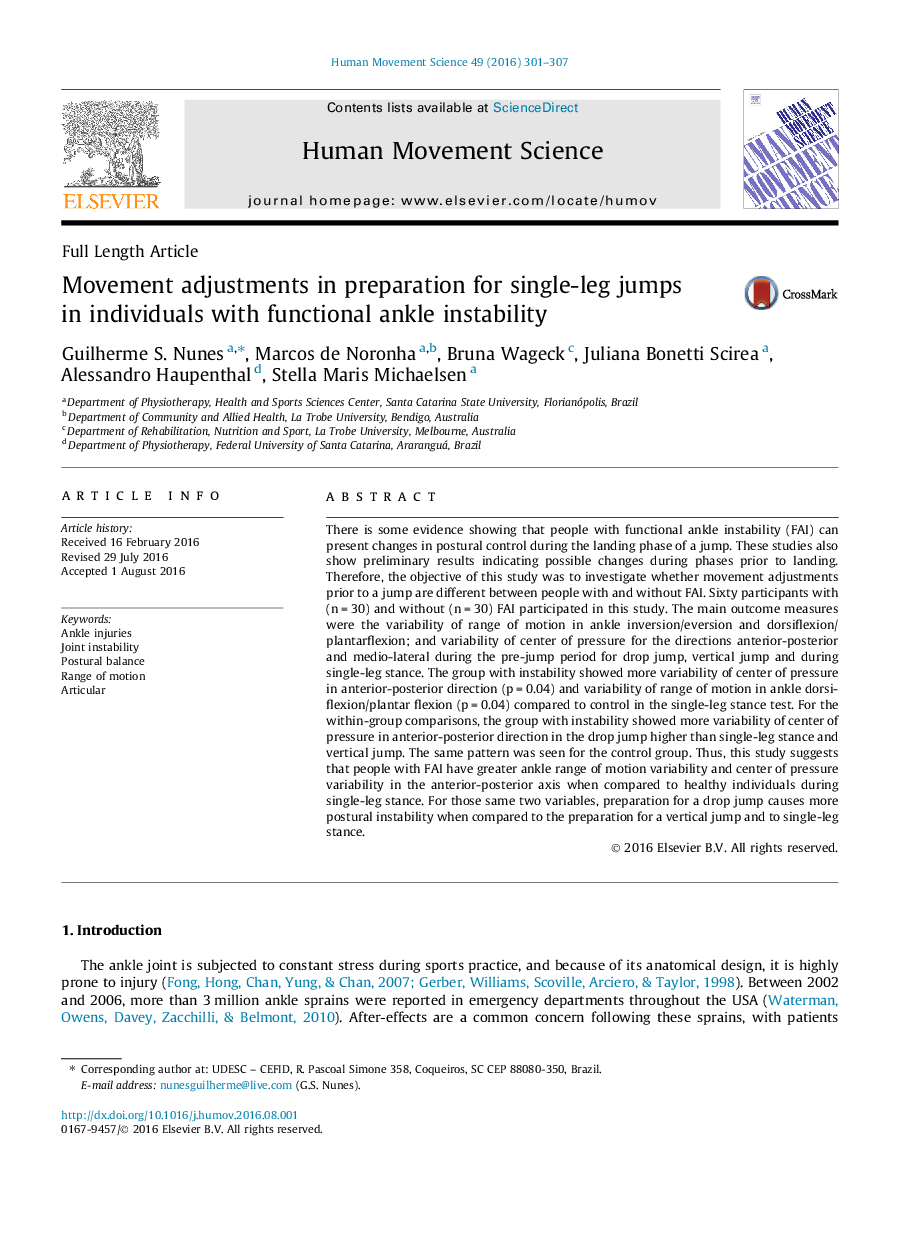| Article ID | Journal | Published Year | Pages | File Type |
|---|---|---|---|---|
| 7291334 | Human Movement Science | 2016 | 7 Pages |
Abstract
There is some evidence showing that people with functional ankle instability (FAI) can present changes in postural control during the landing phase of a jump. These studies also show preliminary results indicating possible changes during phases prior to landing. Therefore, the objective of this study was to investigate whether movement adjustments prior to a jump are different between people with and without FAI. Sixty participants with (n = 30) and without (n = 30) FAI participated in this study. The main outcome measures were the variability of range of motion in ankle inversion/eversion and dorsiflexion/plantarflexion; and variability of center of pressure for the directions anterior-posterior and medio-lateral during the pre-jump period for drop jump, vertical jump and during single-leg stance. The group with instability showed more variability of center of pressure in anterior-posterior direction (p = 0.04) and variability of range of motion in ankle dorsiflexion/plantar flexion (p = 0.04) compared to control in the single-leg stance test. For the within-group comparisons, the group with instability showed more variability of center of pressure in anterior-posterior direction in the drop jump higher than single-leg stance and vertical jump. The same pattern was seen for the control group. Thus, this study suggests that people with FAI have greater ankle range of motion variability and center of pressure variability in the anterior-posterior axis when compared to healthy individuals during single-leg stance. For those same two variables, preparation for a drop jump causes more postural instability when compared to the preparation for a vertical jump and to single-leg stance.
Related Topics
Life Sciences
Neuroscience
Cognitive Neuroscience
Authors
Guilherme S. Nunes, Marcos de Noronha, Bruna Wageck, Juliana Bonetti Scirea, Alessandro Haupenthal, Stella Maris Michaelsen,
